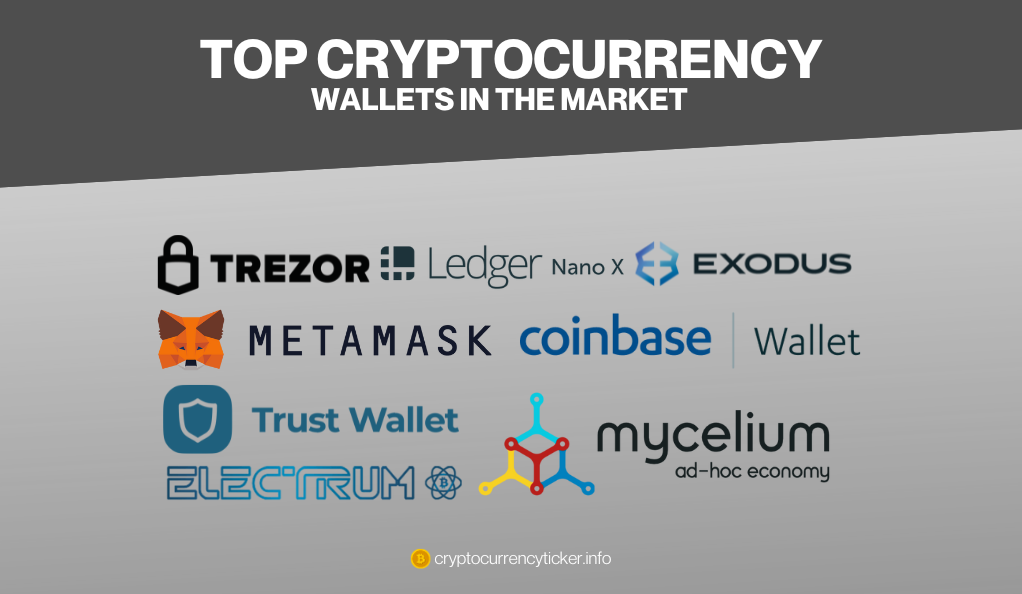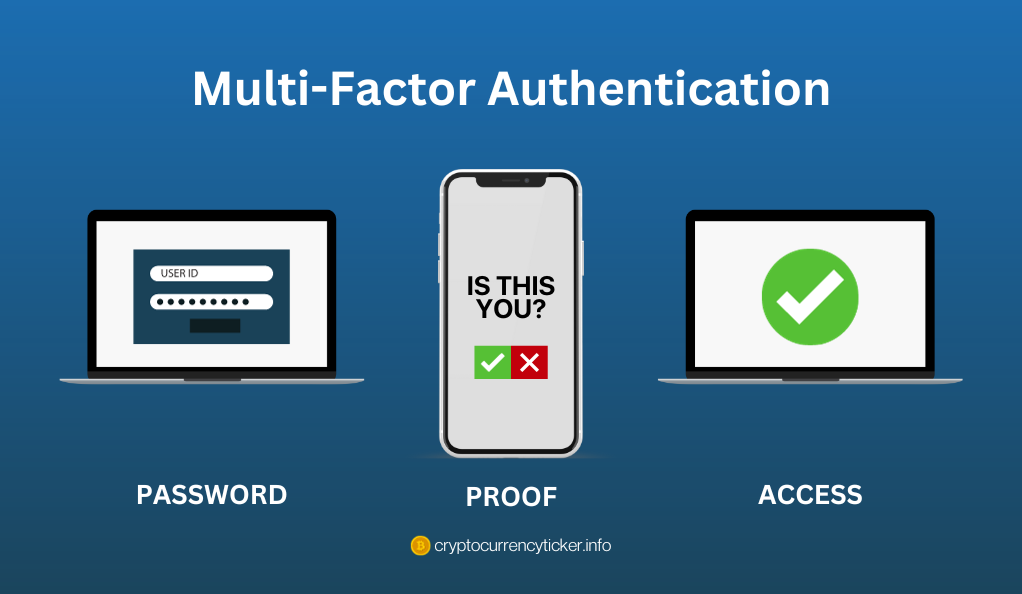Cryptocurrency wallets are essential for managing digital assets, requiring a careful balance between ease of use and robust security. As digital currencies become increasingly popular, the risk of cyber threats also rises, making security a critical aspect of these wallets. This article explores various wallet types, emphasizing the importance of both user-friendly features and strong protective measures. Understanding this balance is crucial for anyone engaged in the digital currency space, from beginners to experienced investors.
Understanding Different Types of Cryptocurrency Wallets
Cryptocurrency wallets come in various forms, each offering a unique blend of convenience and security features. Here’s a brief overview:
- Paper Wallets: These are physical documents containing both your public and private keys, often in the form of QR codes. They are completely offline, providing high security, but require careful physical handling.
- Hot Wallets: Digital and always online, these wallets include desktop and mobile versions. They are convenient for frequent transactions but are more vulnerable to online threats.
- Desktop Wallets: Installed on PCs or laptops, they offer reasonable security unless the computer is compromised by viruses or hacking.
- Mobile Wallets: Apps on smartphones, ideal for on-the-go transactions. They are user-friendly but need external backup of private keys for enhanced security.
- Web Wallets: Operate on the cloud and can be accessed from multiple devices. While they offer ease of access, storing private keys online increases the risk of hacking.
Top Cryptocurrency Wallets in the Market

The cryptocurrency market boasts a variety of wallets, each known for its unique features. Here’s a look at some of the top players:
- Trezor Wallet: A leader in cold storage, Trezor supports over 1,600 cryptocurrencies. It’s known for strong security measures like PIN codes and passphrases, and connects to desktops for offline transaction signing.
- Ledger Nano X: A renowned hardware wallet, Ledger Nano X supports over 1,800 digital coins and tokens. It features a Secure Element chip for enhanced security and pairs with the Ledger Live app for trading.
- Exodus Wallet: Popular for its user-friendly interface, Exodus supports multiple cryptocurrencies and offers real-time portfolio tracking. It encrypts private keys on the device for security.
- Metamask: A favorite for Ethereum users, Metamask functions as a browser extension and mobile app, featuring a key vault and secure login.
- Coinbase Wallet: Developed by the Coinbase exchange, it allows storage of crypto and NFTs, supports airdrops and ICOs, and enables crypto shopping.
- Trust Wallet: An open-source, decentralized mobile app, Trust Wallet supports various digital assets and blockchains.
- Mycelium: Focused on Bitcoin, Mycelium is a mobile wallet known for its control over transaction fees and hardware wallet integration.
- Electrum: A Bitcoin-centric wallet, Electrum allows custom transaction fees and integrates with several hardware wallets for cold storage.
Essential Security Practices for Cryptocurrency Wallets
When it comes to cryptocurrency wallets, security is paramount. Here are essential practices to ensure your digital assets remain protected:
- Choose a Secure Wallet: Opt for wallets with a strong security reputation, audited by third-party firms, and backed by a solid development team.
- Safeguard Private Keys: Never share your private keys and avoid storing them on internet-connected devices. Consider using hardware or encrypted software wallets.
- Use Strong Passwords: Create unique, complex passwords for each wallet. A password manager can be useful for secure generation and storage.
- Regularly Update Wallet Software: Keep your wallet software updated to benefit from the latest security enhancements and bug fixes.
- Back Up Your Wallet: Regular backups are crucial for recovery in case of loss, theft, or damage. Store backups in secure locations like hardware wallets or offline storage devices.
- Be Cautious on Public Wi-Fi: Avoid using cryptocurrency wallets on public Wi-Fi networks, as they can be prone to hacking.
- Beware of Phishing Scams: Stay vigilant against phishing attempts that ask for private keys or sensitive information. Always verify the source of communications.
The Role of Multi-Factor Authentication in Wallet Security

Multi-Factor Authentication (MFA) has become a cornerstone in the security of cryptocurrency wallets. MFA adds an extra layer of defense, making unauthorized access significantly more challenging. Here’s how it’s shaping wallet security:
- Introduction of Biometrics: The inclusion of biometric authentication, such as facial recognition and fingerprint scanning, is replacing traditional password and PIN methods. This not only bolsters security but also simplifies the authentication process for users.
- Decentralized Identity Systems: The integration with decentralized identity systems alongside hardware wallets is paving the way for more secure MFA options. This innovation is crucial in protecting against identity theft and unauthorized wallet access.
- Enhanced User Verification: MFA requires multiple forms of verification before granting access, significantly reducing the risk of security breaches. This could include something you know (password), something you have (mobile device), and something you are (biometric data).
Advancements in Hardware Wallet Technology
Hardware wallets have long been recognized for providing enhanced security over software wallets. As the technology evolves, these physical devices are set to offer even more advanced features:
- Biometric Verification: Future hardware wallets are expected to incorporate biometric features, like fingerprint scanning, adding a layer of personal security that is difficult to replicate.
- Multi-Currency Support: With the diversification of digital assets, upcoming hardware wallets are being designed to support a broader range of cryptocurrencies, making them more versatile for users with diverse portfolios.
- Collaborations with Traditional Finance: As cryptocurrency becomes more mainstream, we may see collaborations between wallet developers and traditional financial institutions, bridging the gap between digital and traditional finance.
The Emergence of Autonomous Wallets
Autonomous wallets represent a significant trend in cryptocurrency wallet development, driven by advancements in artificial intelligence (AI) and machine learning:
- Automated Financial Management: These wallets can make decisions based on the user’s spending patterns and preferences, facilitating automated budgeting and bill payments.
- Personalized Investment Suggestions: Utilizing AI, autonomous wallets can offer investment suggestions tailored to the user’s financial behavior and goals.
- Enhanced Security with Blockchain: The integration of blockchain technology in these wallets enhances security and transparency, providing a seamless and secure financial experience.
User-Friendly Interfaces in Wallet Development
The cryptocurrency world is increasingly focusing on creating user-friendly interfaces to accommodate the growing user base. This shift aims to make managing crypto assets a seamless and engaging experience:
- Easy Navigation: Modern wallets are being designed with intuitive navigation, allowing users to find and use features effortlessly.
- Customizable Settings: Wallets now offer customization, letting users tailor their experience to their preferences.
- Advanced Security Features: Despite the focus on user-friendliness, there is no compromise on security, with wallets integrating sophisticated security protocols.
Innovations in Dashboard Designs for Cryptocurrency Wallets
The advancement in dashboard designs is revolutionizing user interaction with cryptocurrency wallets. These new designs focus on simplifying the user experience:
- Sleek and Intuitive Design: Modern wallets feature a streamlined interface providing real-time updates and easy access to essential functions.
- Customizable Features: Users can now personalize their dashboard to suit their specific needs, enhancing the overall usability of the wallet.
- Inclusive User Experience: These improvements are not just for seasoned traders but also cater to beginners, making the crypto world more accessible.
Cryptocurrency’s Inclusion in Society

As cryptocurrency gains popularity, its integration into daily life becomes increasingly important. To facilitate this, wallet developers focus on user-friendly interfaces for a seamless experience:
- Simplifying Crypto Transactions: The goal is to make buying, selling, and using cryptocurrencies as straightforward as possible.
- Building Confidence in Users: A user-friendly interface encourages more people to confidently use cryptocurrencies, supporting wider adoption.
- Bridging Traditional and Digital Finance: The enhanced accessibility of crypto wallets helps bridge the gap between traditional financial systems and the digital currency world.
Conclusion
In conclusion, the dynamic world of cryptocurrency wallets is evolving rapidly, emphasizing the crucial balance between security and convenience. From traditional paper wallets to advanced hardware options and AI-driven autonomous systems, the diversity in wallet types caters to a broad spectrum of user needs. With innovations in multi-factor authentication, user-friendly interfaces, and dashboard designs, managing digital assets is becoming more accessible and secure. As cryptocurrency continues to weave into the fabric of society, these wallets play a pivotal role in the seamless transition between traditional finance and the digital economy. Embracing these developments will not only safeguard assets but also foster confidence and growth in the cryptocurrency ecosystem.
